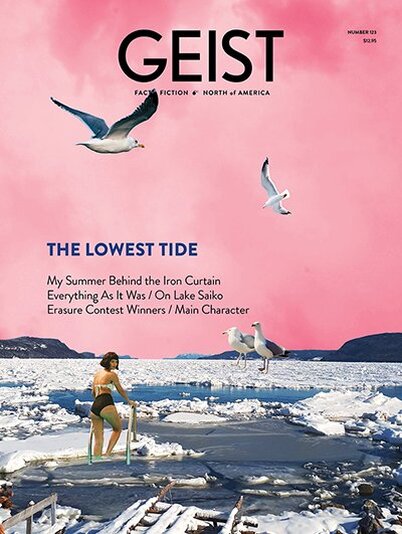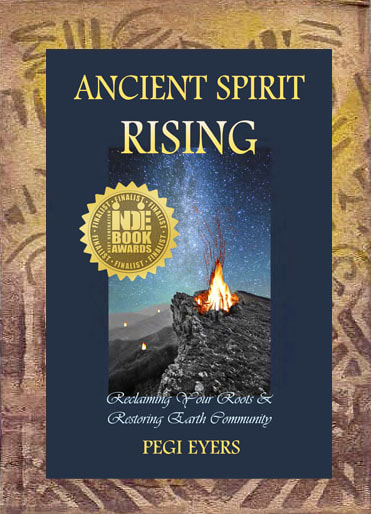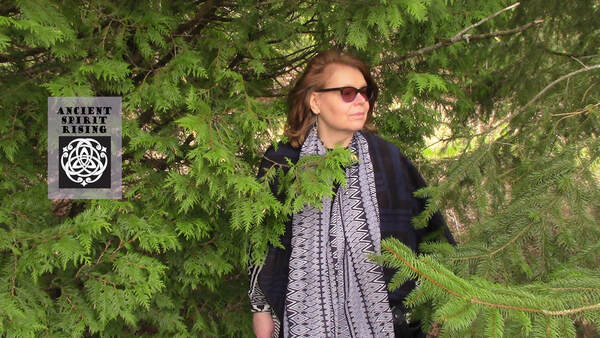PEGI EYERS
CONTACT NO CONTACT
SPACE BETWEEN NATIONS
STORY GATHERING PROJECT
"Colonial Rescue" by Pegi Eyers is a gripping personal narrative that was published by the Contact No Contact project supervised by Randy Fred, the founder of Theytus Books (the first First Nations book publisher in Canada), and the Geist Foundation, the publisher of Geist magazine. A gathering of personal contact narratives created by writers and storytellers, Contact No Contact welcomed Canadians into a conversation on the subject of contact - how contact appears in our lives and our memories, and how we encounter our own culture as well as the culture of others.
“Contact” is a term used to indicate initial encounters of Indigenous peoples with Settlers, and carries a special charge in accounts of Indigenous history.
“Contact” is a term used to indicate initial encounters of Indigenous peoples with Settlers, and carries a special charge in accounts of Indigenous history.
Colonial Rescue
PEGI EYERS
Recently I was shocked to hear about a “first contact” story that added a whole new layer to my personal mythology. Back in 1832, my ancestors were among the first families to settle in Orillia, Ontario. As they approached the area by boat, their craft capsized in the waters of Lake Couchiching near “The Narrows.” On board was a tiny baby, my third great-grandmother Eliza Bailey, and she was brought safely to shore by a kind member of the Chippewa (Ojibway) Nation. Seven generations later, I am astonished at how Eliza’s story transcends ordinary ethnoautobiography, and am overcome by a series of questions tangled up with destiny, kindness, retribution, ancestral memory and structural inequality.
Our tale is far from unique, as countless narratives describe how the Settler Society were welcomed, integrated, and dependent upon First Nations everywhere, who freely gave us gifts of food, land, medicine, and our very lives. And yet I have to wonder if my family line would even exist, had Eliza perished in the waters of Lake Couchiching? And why wasn’t this information an important part of our family story? A member of Mnjikaning First Nation and Keeper of the Fish Fence cared for my ancestor, but what did we do to return the favor? We have a lot to examine, as we make retributions for the terrible years of land seizure, genocide, oppression, relocation and residential schools. And as we move forward together, I hope to contribute to that process.
Our tale is far from unique, as countless narratives describe how the Settler Society were welcomed, integrated, and dependent upon First Nations everywhere, who freely gave us gifts of food, land, medicine, and our very lives. And yet I have to wonder if my family line would even exist, had Eliza perished in the waters of Lake Couchiching? And why wasn’t this information an important part of our family story? A member of Mnjikaning First Nation and Keeper of the Fish Fence cared for my ancestor, but what did we do to return the favor? We have a lot to examine, as we make retributions for the terrible years of land seizure, genocide, oppression, relocation and residential schools. And as we move forward together, I hope to contribute to that process.
Access current selections from CONTACT NO CONTACT >here< by Margaret Nowaczyk, Steven Heighton, Duncan Mercredi, and Randy Fred. The term “contact” is used to describe initial encounters between Indigenous peoples and European explorers, and carries a special charge in accounts of North American history.
The stories are a selection from the project Contact No Contact, a gathering of personal narratives by Indigenous and settler contributors describing significant first contacts that brought new insights. These stories are a living (and growing) record that enhances our understanding of the experience and impact of “contact.”
The stories are a selection from the project Contact No Contact, a gathering of personal narratives by Indigenous and settler contributors describing significant first contacts that brought new insights. These stories are a living (and growing) record that enhances our understanding of the experience and impact of “contact.”





